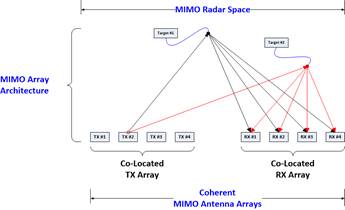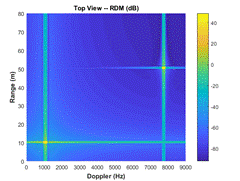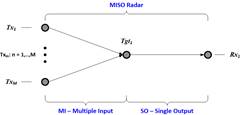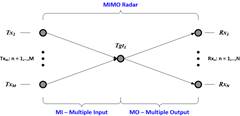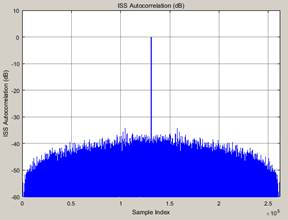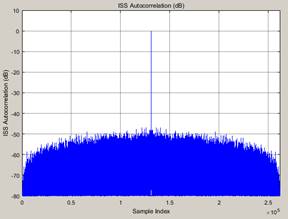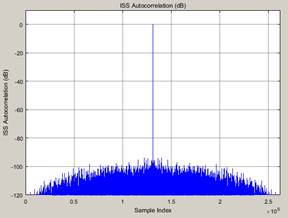MIMO-DPR Radar System
The MIMO-DPR Radar System is a “non-linear” digital radar system. Multiple-Input, Multiple-Output Digital Plenoptic Radar (MIMO-DPR) is a new class of digital radar. The architecture of this “non-linear” digital radar system is composed of three basic radar subsystems. These radar subsystems are:
- CDMA Subsystem:
- MIMO Subsystem:
- ISS Subsystem:
The Code Division Multiple Access (CDMA) Spread-Spectrum Subsystem provides the radar with cellular single-frequency, multi-user, multi-access, and code-diversity capabilities. |
The Multiple-Input, Multiple-Output (MIMO) Antenna Array Subsystem provides the radar with space-diversity capabilities. |
The Intermodulation Spread Spectrum (ISS) Waveform Subsystem provides the radar with “non-linear” waveform capabilities. |
Details of the MIMO-DPR Radar System are presented in the sections below.
Figure 1 portrays the concepts of a radar system operating with “active”, “collective”, “synergistic”, and “cooperative” interoperations, intercommunications, and interconnectivity.
